week 4 - model evaluation + hyper parameter tuning - need for model validation methods
1/12
There's no tags or description
Looks like no tags are added yet.
Name | Mastery | Learn | Test | Matching | Spaced |
|---|
No study sessions yet.
13 Terms
recap: supervised learning
model : form of function that we learn - characterised by free parameters
cost function: measures the misfit of any particular function from the model given a training set
training algorithm: for example, gradient descent that minimises the cost function - running the training algorithm on some training data learns the “best” values of the free parameters, yielding a predictor
something that can make educated guesses or predictions about new data it hasn’t seen before
hyper parameters
= ‘higher-level’ free parameters
hyper parameters = settings that control how a learning algorithm works - adjusting these hyper parameters = make your model better at understanding data w/o changing core learning process - like tweaking the knobs on a machine to get the best results
examples:
→ in neural networks
depth (no. of hidden layers)
width (no. of hidden neutrons in a hidden layer)
activation function (choice of nonlinearity in non-input nodes)
regularisation parameter (Way to trade off simplicity vs. to fit the data)
→ in polynomial regression:
order of the polynomial (i.e. use of x, x², x3,…, xn)
→ in general:
model choice
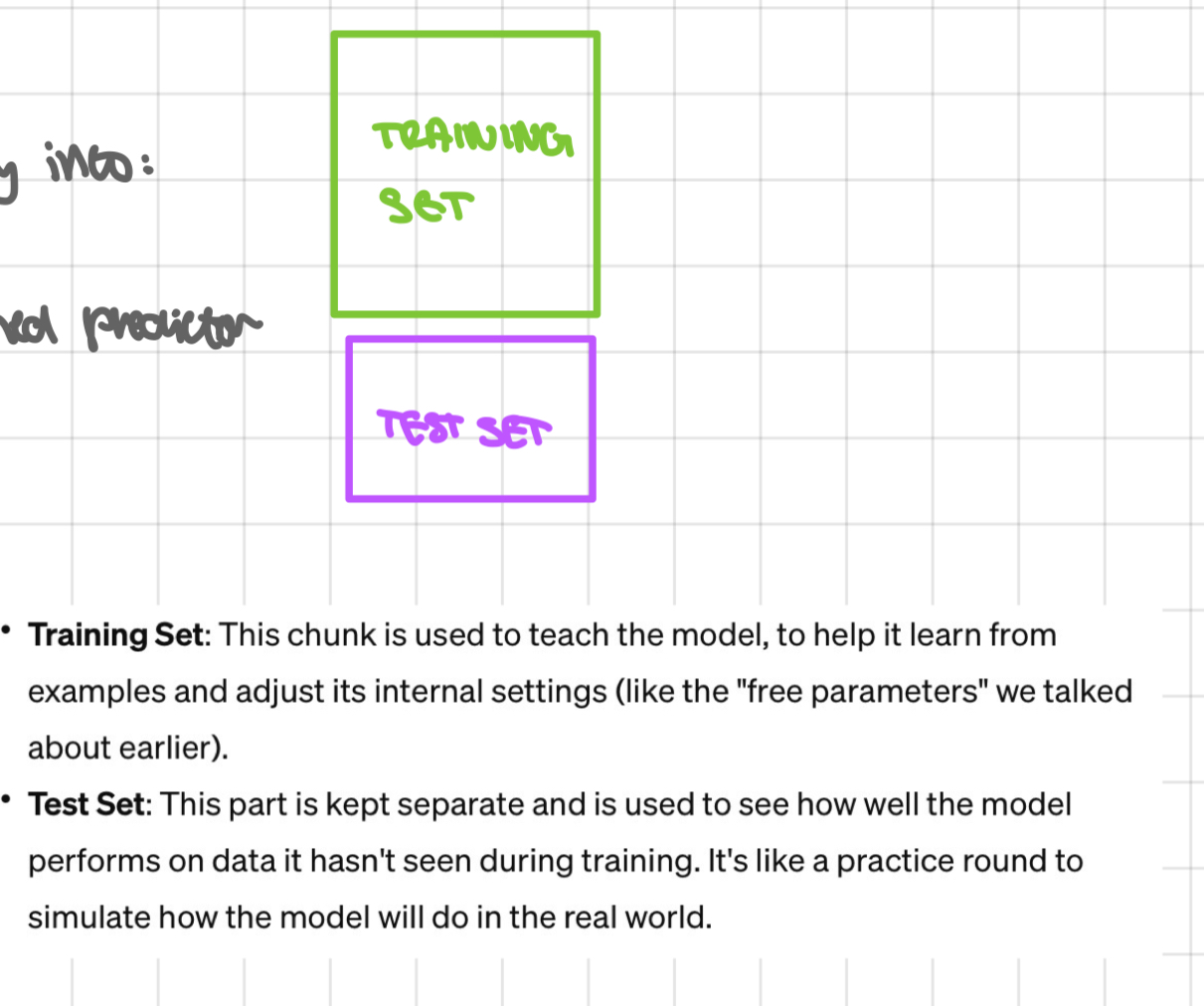
evaluation of a predictor before deployment
→ getting a predictor : first, train a model using data that’s already been annotated = teaching the model to make predictions based on examples we’ve given it
→ evaluation of a predictor serves it to estimate its future performance, before deploying it in the real world
to do so, always split available annotated data randomly into:
a training set - used to estimate the free parameters
a test set - used to evaluate the performance of the trained predictor before deploying it
by doing this, = can have ↑ confidence our model will work well when we actually deploy it irl situations

which model + how to set hyper parameters ?
each hyper parameter value you choose creates a diff version of the model → e.g. changing the depth or width of a neural network creates a diff model
we need methods that evaluate each model
for this evaluation, x use the cost function computed on the training data set, why?
the more complex (flexible) the model = the ✓ it’ll fit the training data
but, goal = predict well on future data
a model that has capacity to fit any training data will overfit
sets
training set = annotated data used for training within a chosen model
test set = annotated data used for evaluating the trained predictor before deploying it
none of these can be used to choose the model
if you use the test set = x longer have an independent data set to evaluate final predictor before deployment
note: x confuse choosing hyper parameter w evaluating a predictor

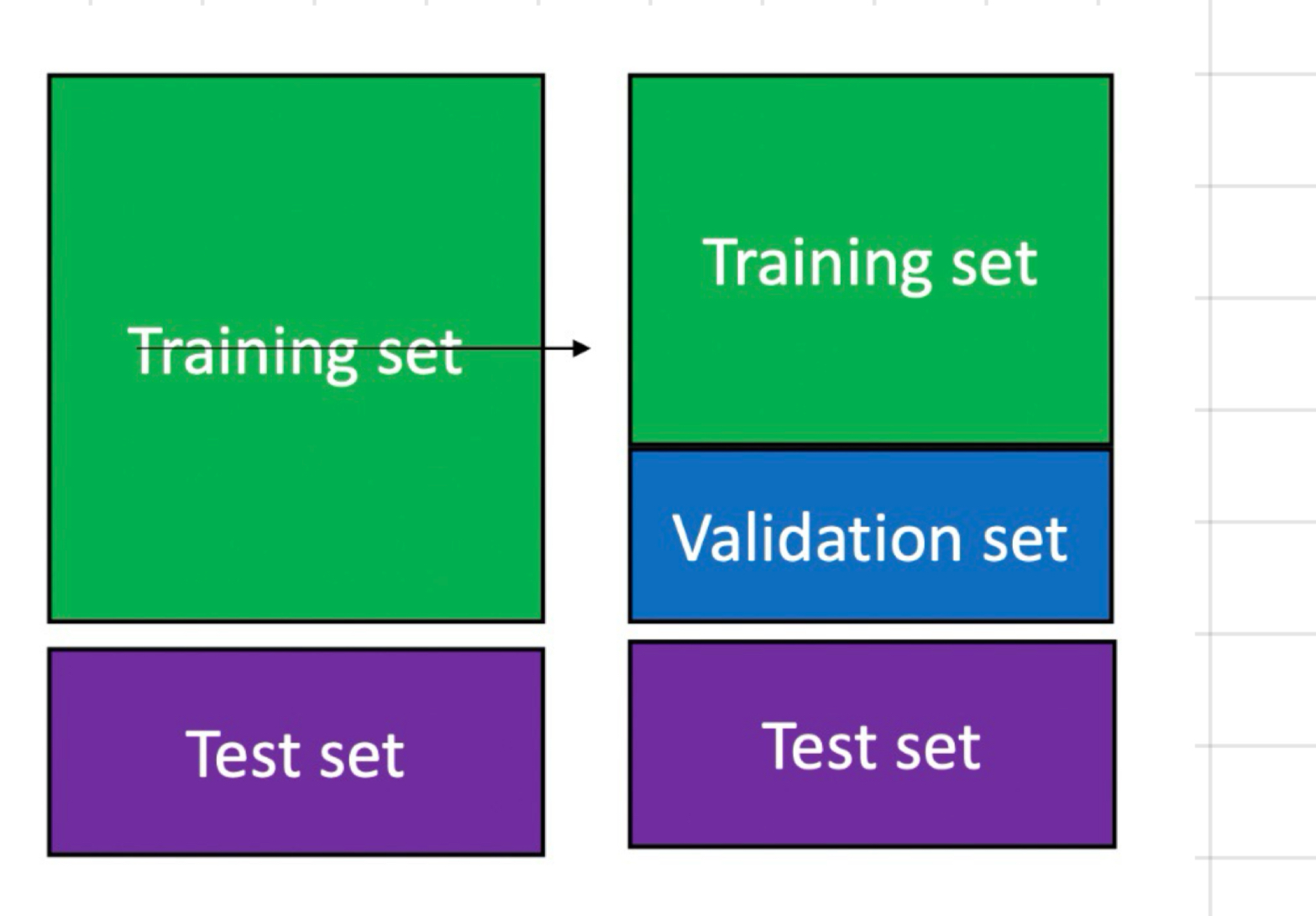
evaluating models for model choice
idea: choose between models or hyper parameters, separate a subset from training set to create a validation set
methods:
hold out validation
cross validation
leave-one-out validation

method 1: hold out validation
steps:
randomly choose 30% of data to form a validation set (blue data points)
remaining data forms the training set (black data points)
train your model on the training set
estimate the test performance in the validation set
choose the model with the lowest validation error
retrain the chosen model on joined training + validation to obtain predictor
estimate future performance of obtained predictor on test set
ready to deploy the predictor

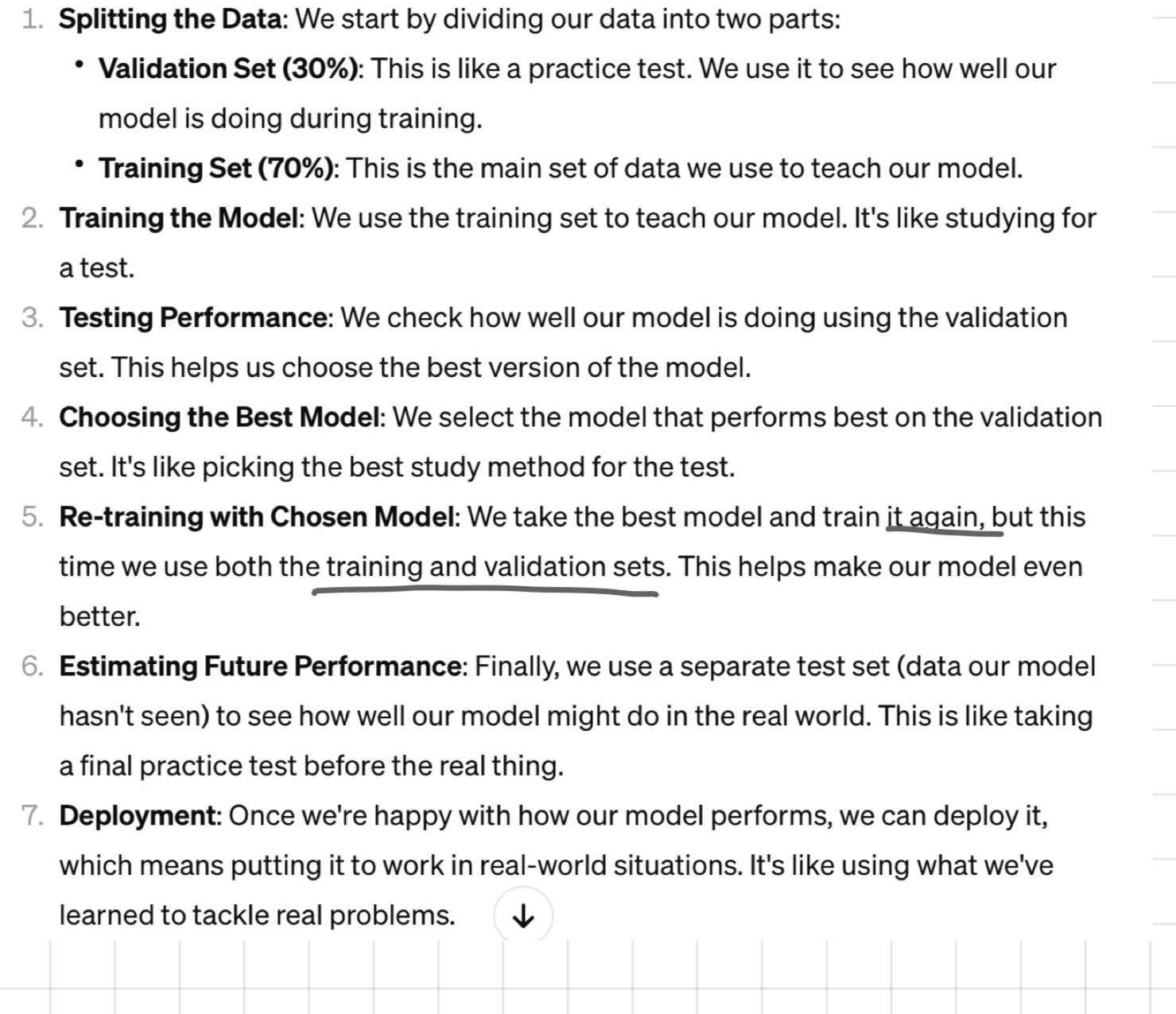
continued
note on step 4: in practice, done differently in regression + classification
→ regression: compute the cost function (MSE) on the examples of the validation set (instead of the training set)
→ classification: we x compute the cross-entropy cost function of the validation set - instead compare 0-1 error metric:
0-1 error metric = no, of wrong predictions/no. of predictions = 1- accuracy
other metrics beside entropy can also be employed

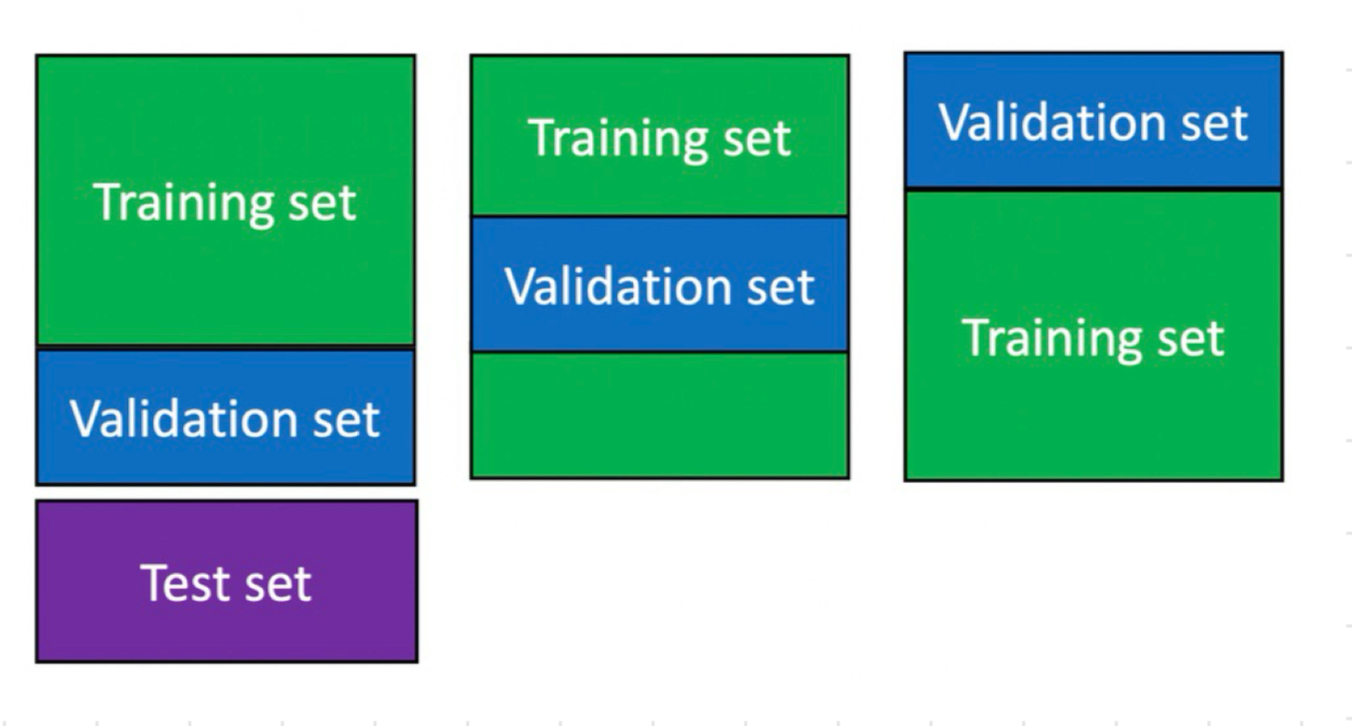
method 2: k-fold cross-validation
split the training set randomly into k (equal sized) disjoint sets (in this example, k=3)
use k-1 of those together for training
use the remaining one for validation
permute the k sets and repeat k times (rearrange w/o removing any elements)
average the performances of k validation sets
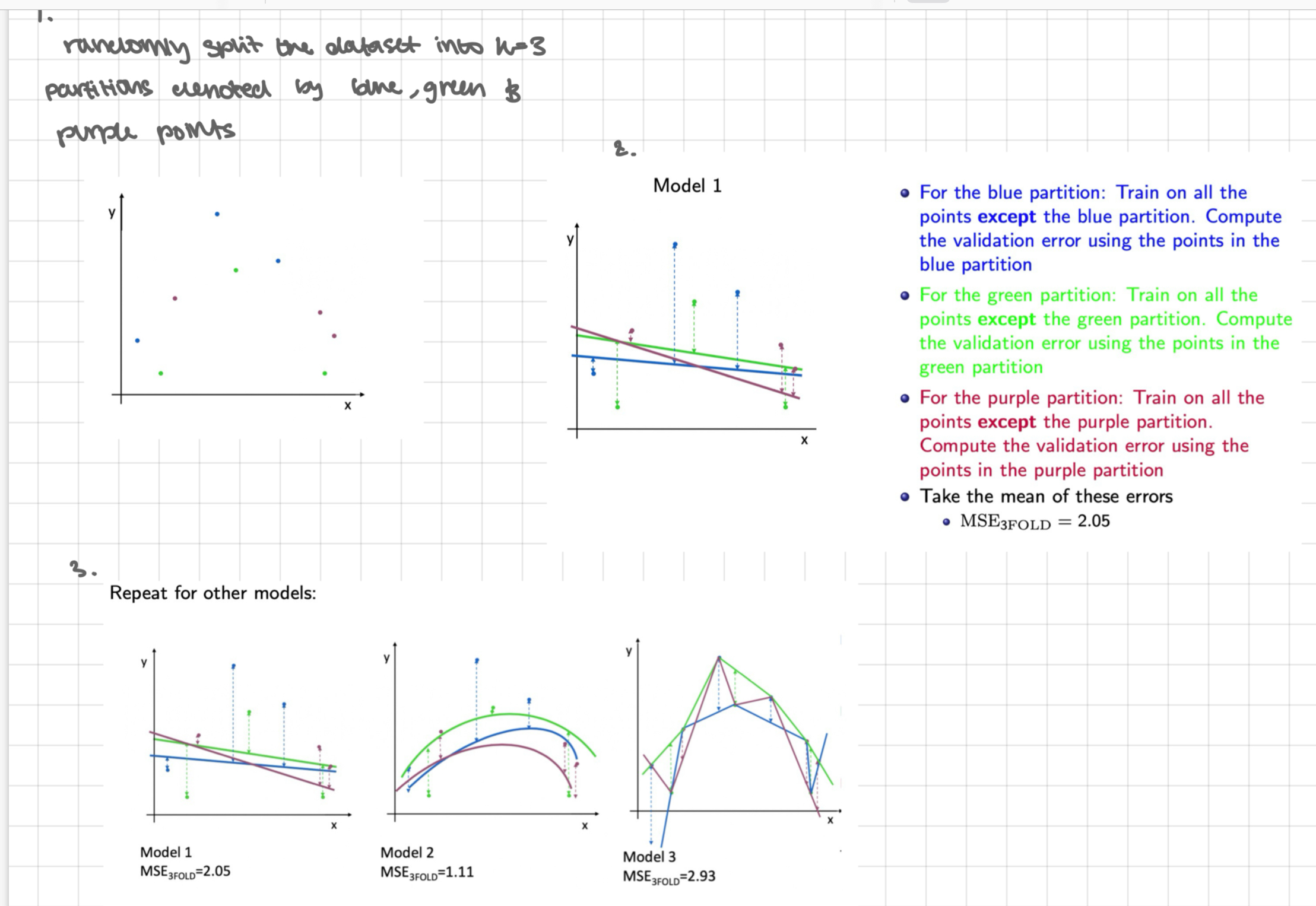
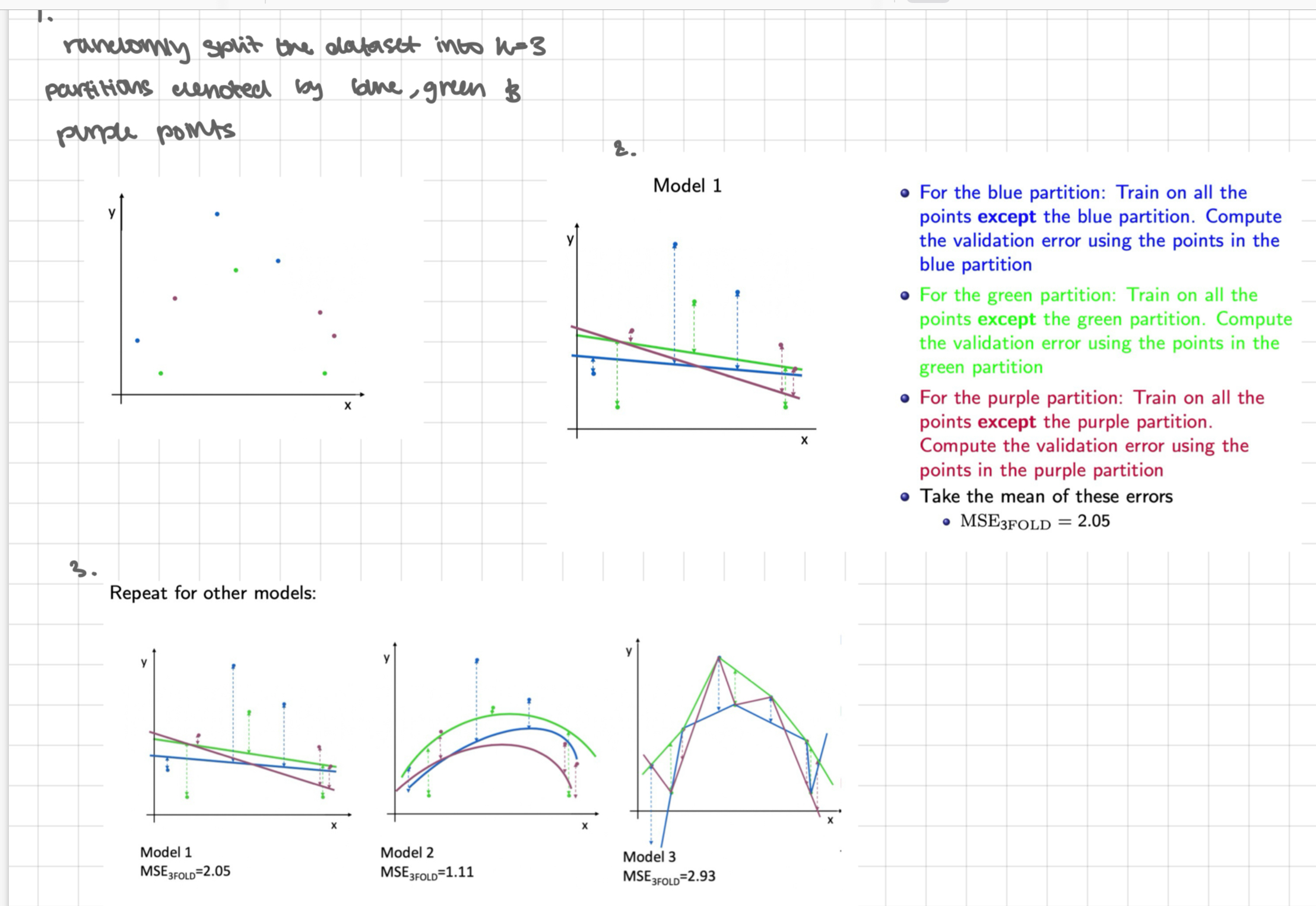
explanation of method 2 steps
randomly split the dataset into k=3 partitions denoted by the blue, green + purple points
for the blue partition: train on all points except the blue partition. compute the validation error using the points in the blue partition. for the green partition: train on all points except the green partition. compute the validation error using the points in the green partition. for the purple partition: train on all points except the purple partition. compute the validation error using the points in the purple partition. - take the mean of these errors
repeat for the other models
choose the model with the smallest avg 3-fold cross validation error - here in model 2
retrain with the chosen model on joined training + validation to obtain the predictor
estimate future performance of the obtained predictor on test set

method 3: leave-one-out validation
leave out a single example for validation + train on all the rest of the annotated data
for a total of N examples, we repeat this N times, each time leaving out a single example
take the average of the validation errors as measured on the left-out points
same as n fold cross-validation where N is the no. of labelled points
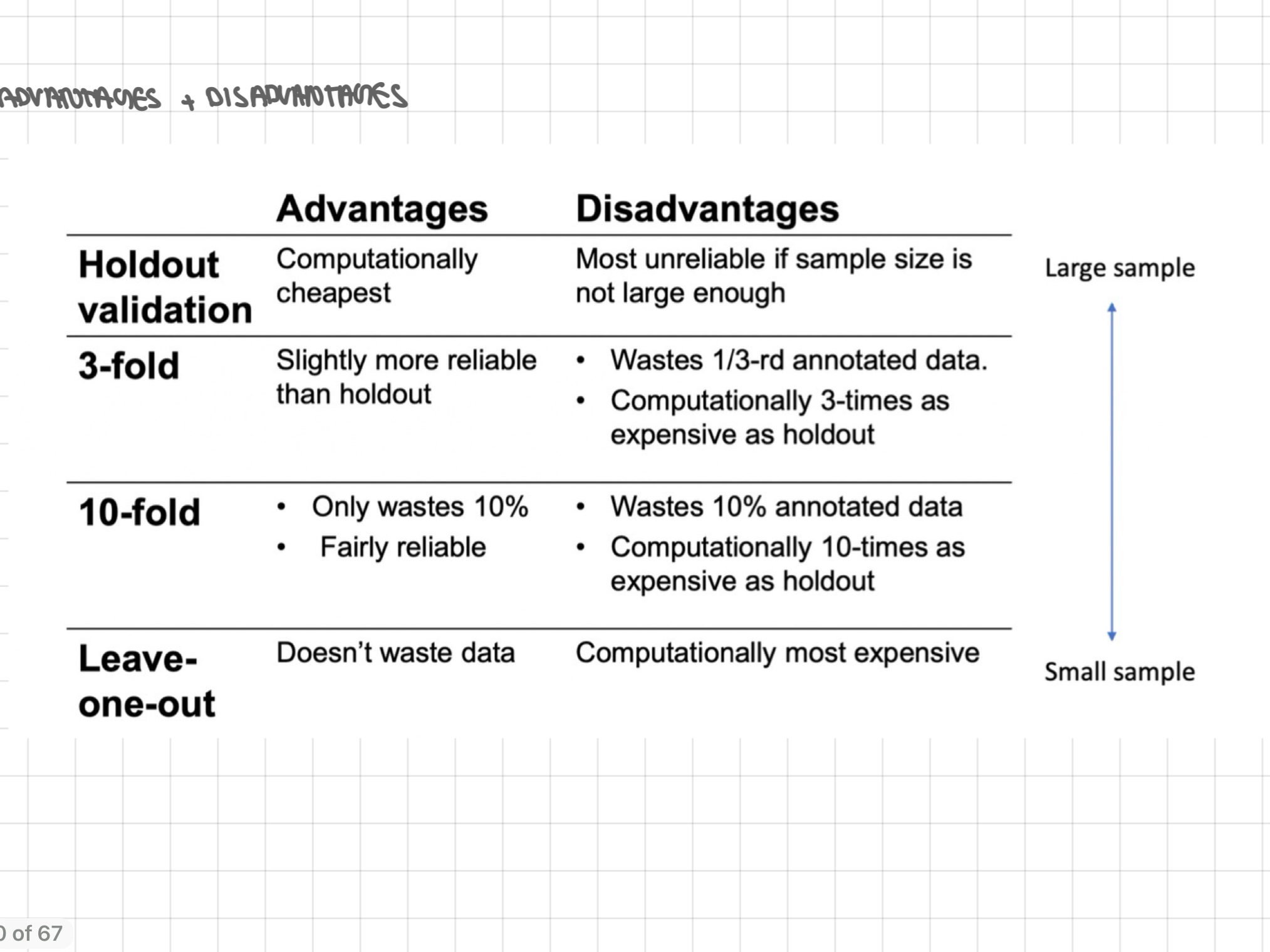
advantages + disadvantages of the methods